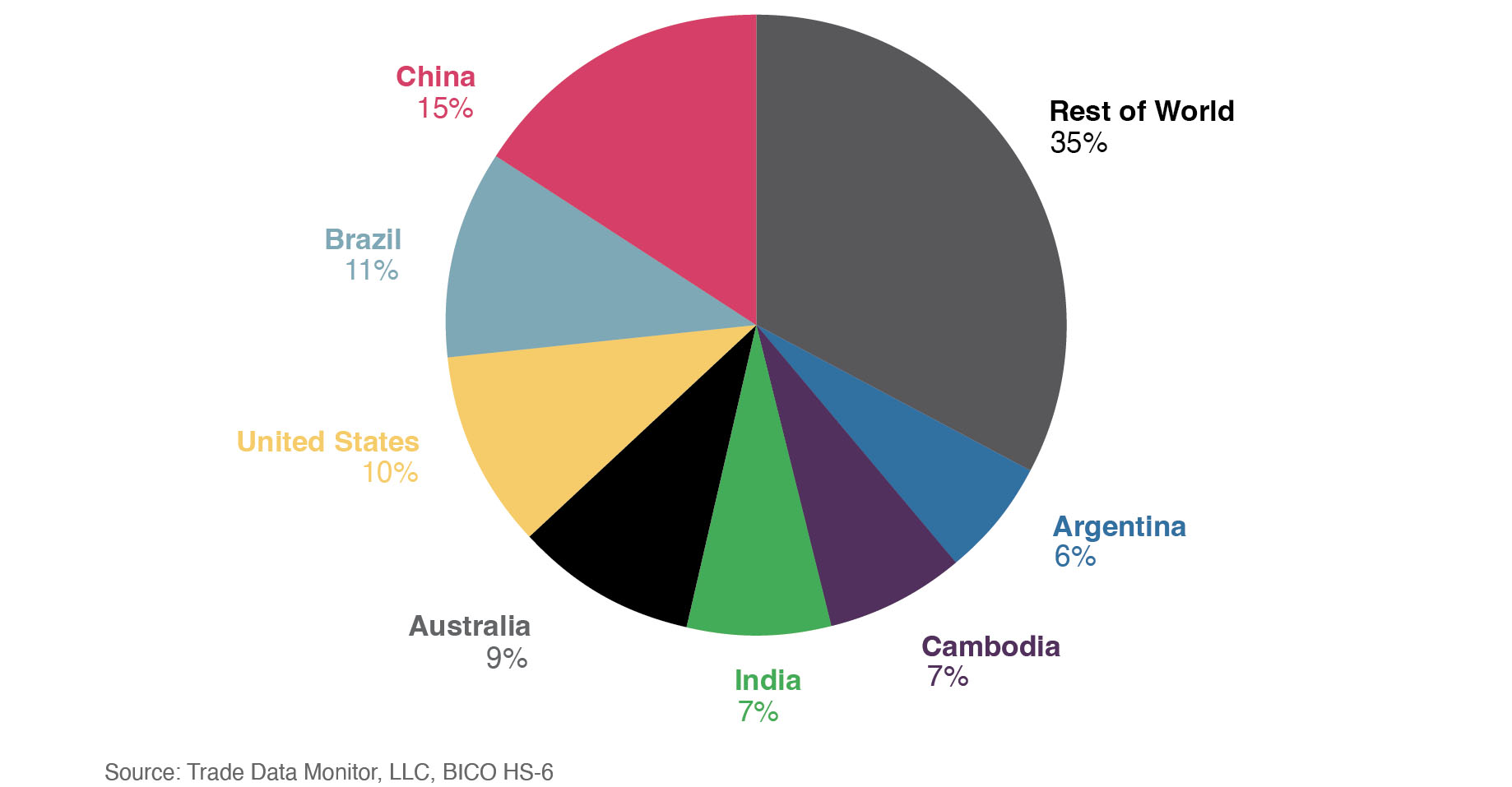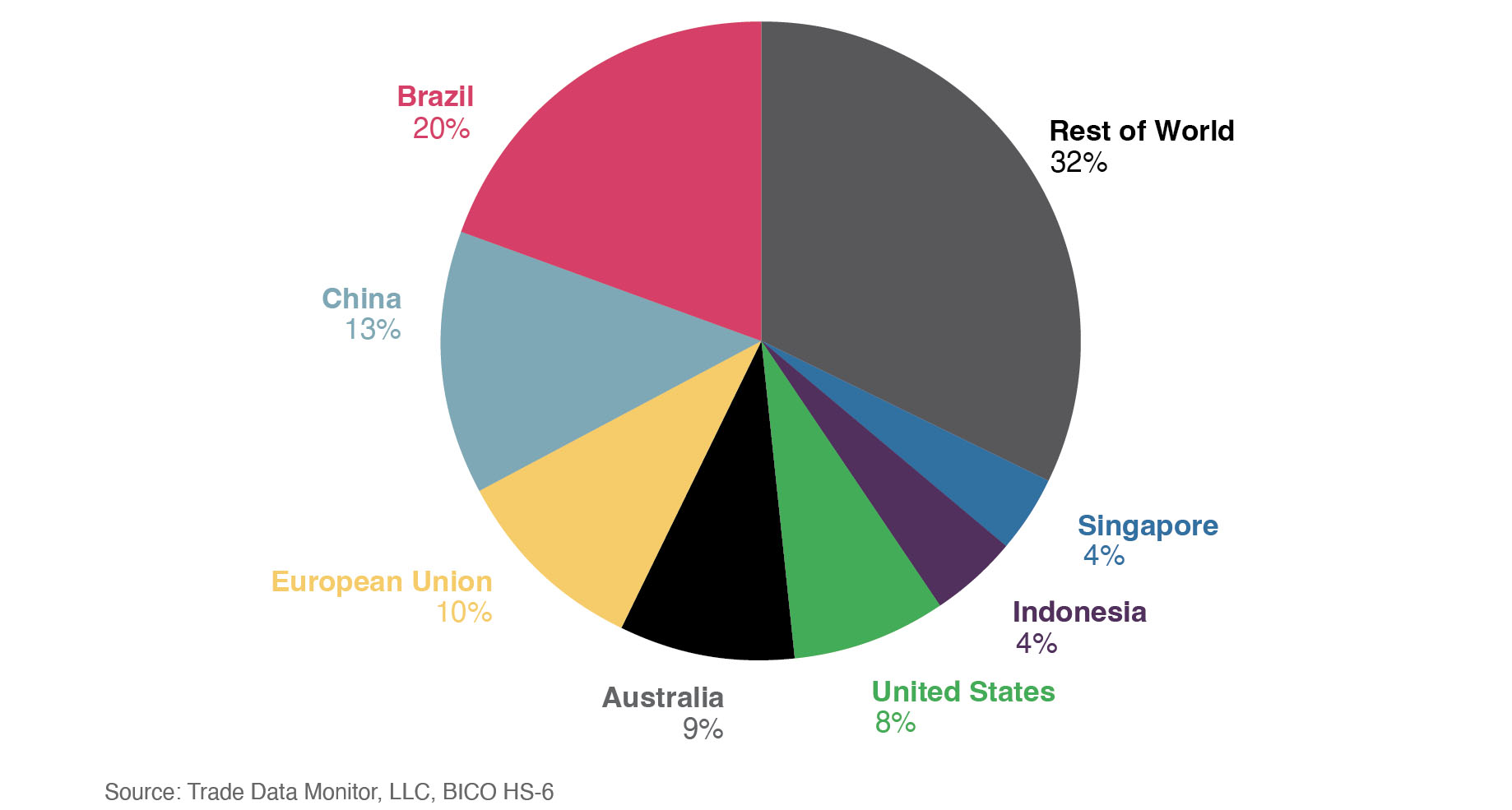WASHINGTON — Vietnam and Thailand are both experiencing burgeoning populations and expanding middle classes, providing US exporters of agricultural products, including pet food producers, opportunity for international expansion, according to the US Department of Agriculture’s (USDA) Foreign Agricultural Service (FAS).
Vietnam
The Vietnamese economy, in particular, is poised for significant expansion in the coming decades, according to the FAS. Vietnamese consumers are becoming more interested in the origin and composition of their food products as they home in on health and wellness. The country also touts growing retail, tourism and food processing sectors that are able to absorb high-value US agricultural products.
Vietnam’s population is currently estimated at 105 million and is currently one of the fastest growing economies in the world. According to data shared by the FAS, the gross domestic product (GDP) of the country is set to stabilize with growth this year expected at 6%. The GDP per capita in 2023 was $4,284, an increase of $160 from 2022. This growth is attributed to significant expansion of services and industrial sectors in the country, as well as the recovery of tourism following COVID-19.
With rising per capita income, Vietnam has continued to ramp up its agricultural imports over the past three years. In 2023, the country imported $32 billion worth of agricultural products. The top nations supplying agricultural products to Vietnam in 2023 were China at 15%, Brazil at 11%, the United States at 10%, Australia at 9%, India at 7%, Cambodia at 7% and Argentina at 6%. The rest of the world accounted for the other 32%, due to Vietnam’s continued ratification and expansion of its Free Trade Agreements (FTAs).
 Source: Trade Data Monitor, LLC, BICO HS-6
Source: Trade Data Monitor, LLC, BICO HS-6According to the FAS, the United States exported $3.1 billion worth of agricultural products to Vietnam in 2023, representing the third largest exporter to the country. Top US exports included those related to feed and manufacturing, including pet foods. Despite this, the FAS highlighted that the Vietnamese market is price sensitive.
Consumers in Vietnam are seeking products that tout high quality and safety, attributes in which US agricultural products naturally fit. For pet food specifically, the FAS noted that interest in dogs and cats as pets in the country have steadily risen along with the rate of disposable income. During the past five years the dog and cat populations have grown 30% and 20%, respectively.
With more pets comes an increased need for nutrition. Vietnamese pet parents are slowly shifting away from non-prepared pet foods (like human food scraps) to prepared products (processed wet and dry foods and treats). According to the FAS, in 2023 retail sales of both dog and cat food grew more than 15%.
According to Euromonitor International Vietnamese purchasers of pet food are less sensitive to price inflation, spelling good news for US pet food processors. However, currently US processors are only eligible to export dried pet food to Vietnam. Despite this limitation, the opportunities are significant, as the country is also seeking pet food ingredients and additives for its own products.
Thailand
The Thai market also shows promise for US consumer-oriented agricultural products. According to the FAS, the country touts the fourth highest per capita income in the Association of Southeast Asia Nations. Thailand’s population currently sits at 70 million. The country’s forecasted GDP growth for 2024 is 3%, compared to 2.5% in 2022, and this is expected to rise to 3.5% by 2027.
It’s important to highlight that Thailand is coming off high consumer price inflation from 2022. Though prices have stabilized and inflation in Thailand is expected to remain below 2%, GDP per capita has witnessed a small drop. According to the World Bank, GDP per capita in 2022 was $6,910, a decrease of about $150 from 2021.
Despite consumer economic challenges, Thailand imported $17 billion worth of agricultural products. The top supplying nations were Brazil at 20%, China at 13%, the European Union at 10%, Australia at 9%, the United States at 8%, Indonesia at 4%, and Singapore at 4%.
 Source: Trade Data Monitor, LLC, BICO HS-6
Source: Trade Data Monitor, LLC, BICO HS-6
In the last year, the United States exported about $1.2 billion in agricultural products to Thailand. Top exports focused on bulk commodities related to feed and manufacturing. According to the FAS, demand in Thailand for processed foods, healthy food products, as well as plant-based and free-from are witnessing increased popularity.
Similar to that in Vietnam, dog and cat populations in Thailand are expanding. In 2020, there were an estimated 14.5 million pets in the country including 8.9 million dogs and 3.3 million cats. In 2020, the United States dominated the country’s imported pet food market, holding 34% of share at over $14 million.
As Thai consumers shift to healthier lifestyles and begin examining those of their pets, purchases of premium packaged pet foods and treats have risen, particularly those that tout “natural” and “healthy” labels. The country currently allows both dry and wet pet food imports from the United States.
With all these aspects in mind, the FAS expects that US processors will find “exciting” prospects for their products in the Vietnamese and Thai markets, especially as each country’s population, economy, and pet ownership level continues to grow.
Find more articles related to pet food export opportunities and trade.




